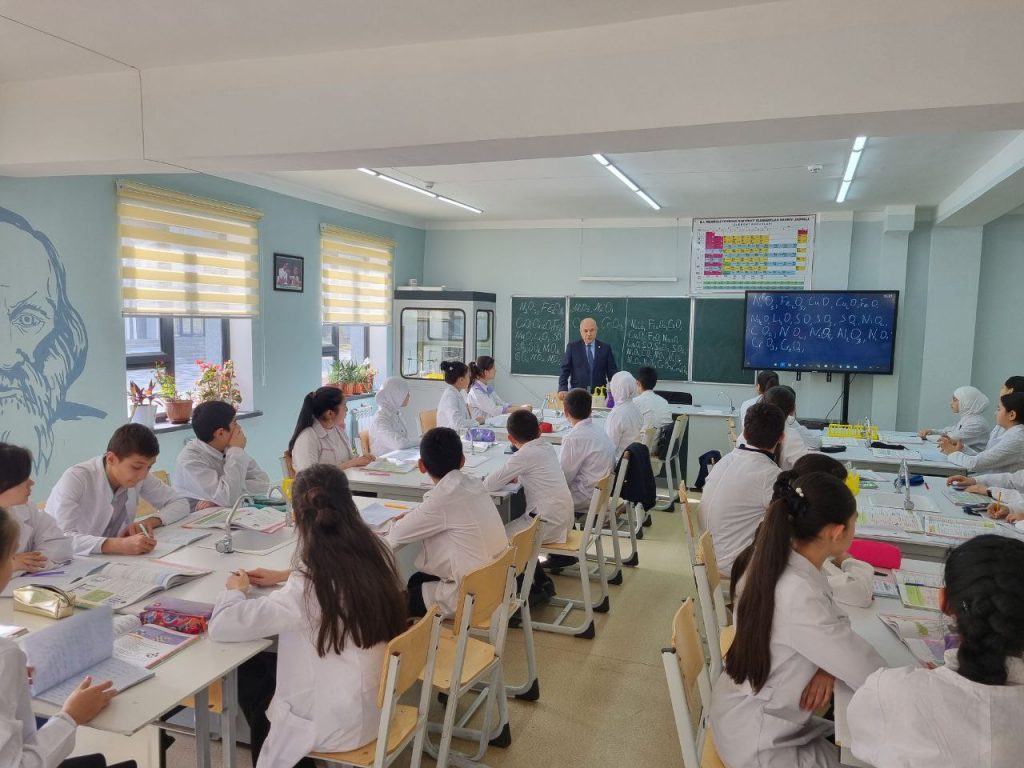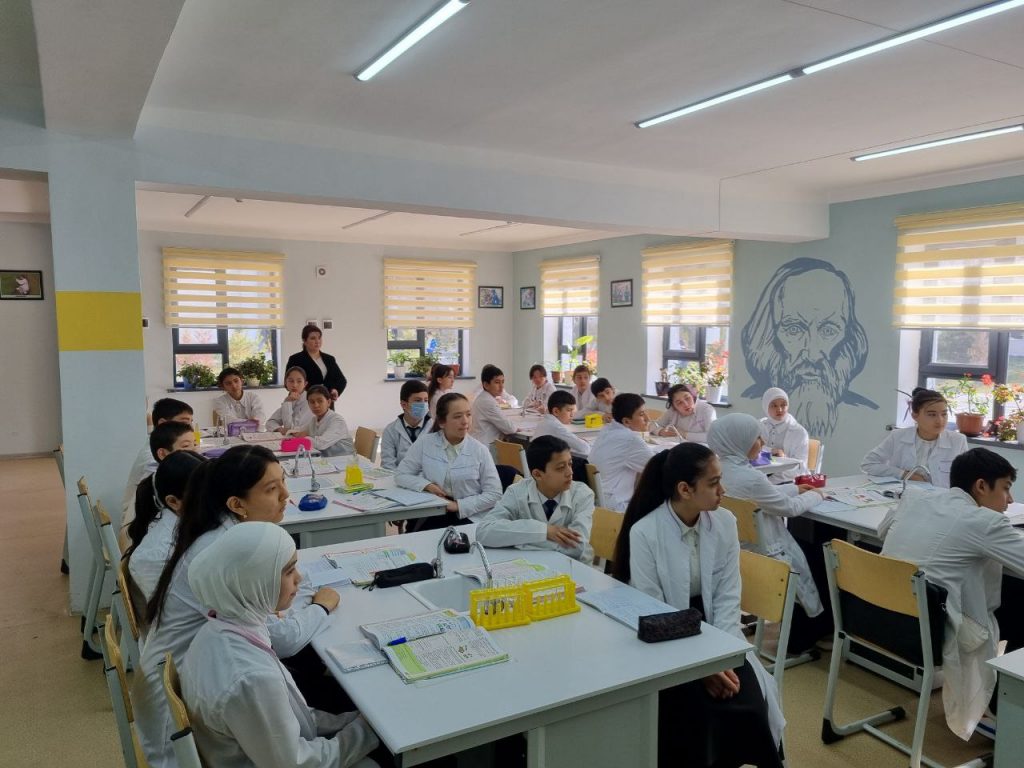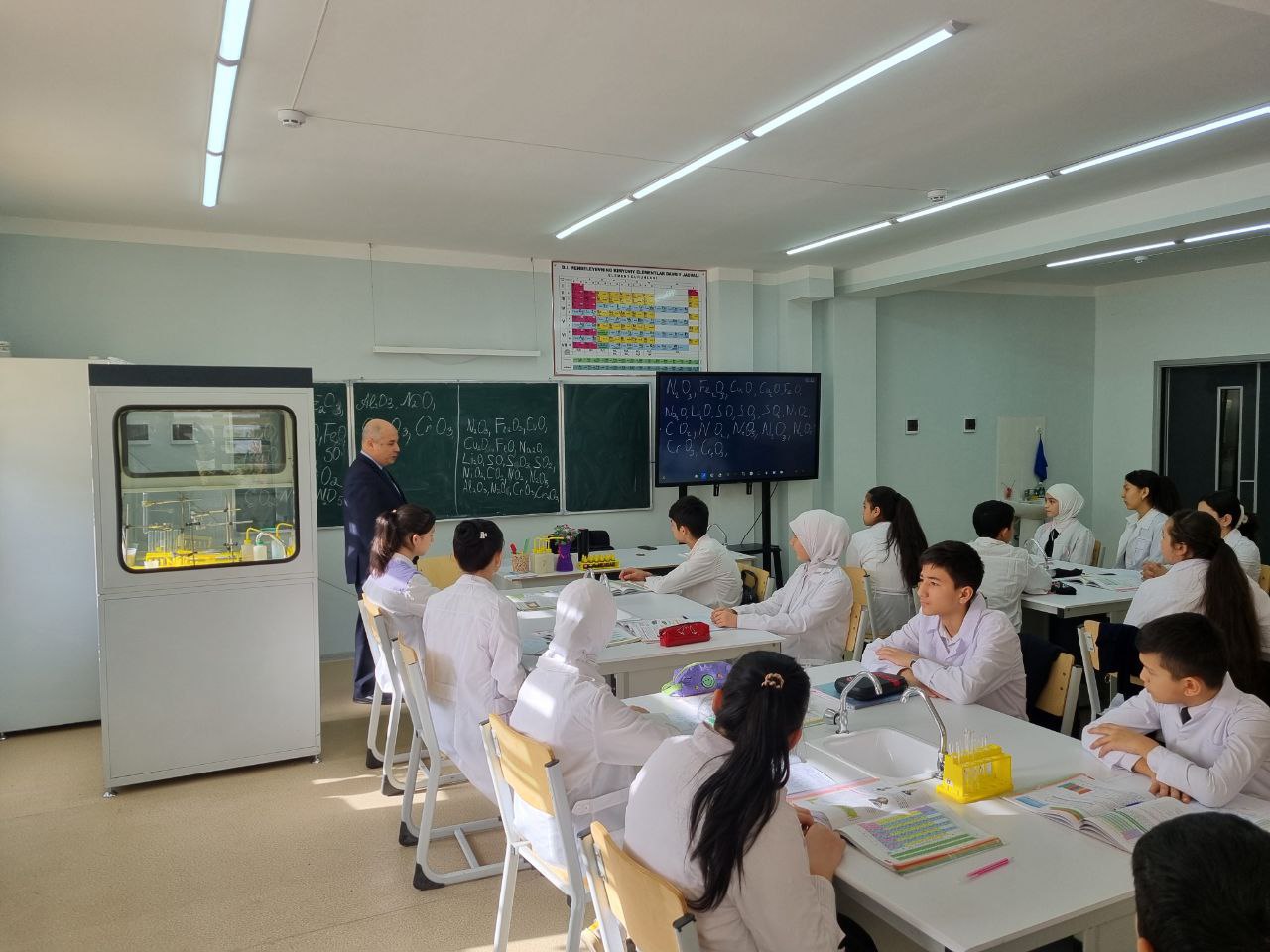The structure and characteristics of chemical elements, by what principle they are indicated in the Mendeleev table, the amazing stories of their discovery and much more were told to pupils of secondary school № 14 of Zangiata district of Tashkent region by the head of the department of “Natural and mathematical disciplines” Turin Polytechnic University Tashkent, Doctor of Technical Sciences, academician Dilshat Ubaydullaevich Tulyaganov.
Introducing pupils to the topic of the lesson, academician Tulyaganov emphasized that the discovery of chemical elements took place over a long period of time. So carbon, sulfur, iron, copper, silver, tin, gold, mercury, and lead have been known since ancient times.
Arsenic, antimony, bismuth, zinc were obtained in the Middle Ages, and phosphorus, nitrogen, barium, beryllium, hydrogen, tungsten, yttrium, oxygen, cobalt, manganese, molybdenum, nickel, platinum, strontium, tellurium, titanium, uranium, fluorine, chlorine, chromium, zirconium in the 17th and 18th centuries. During the 19th century about 48 new elements were discovered, including aluminium, germanium, silicon, a number of alkali and alkaline earth metals, the inert gases helium, argon, neon, krypton, xenon radon, as well as lanthanum, lanthanides and many others.
Today there are already 118 chemical elements in the Mendeleev table – 92 of them are found in nature, the rest were obtained artificially – they are unstable and have short periods of existence. Chemical elements, all isotopes of which are unstable, are called radioactive and include all elements with atomic numbers higher than polonium.
In general, the lesson was conducted in an interactive question-and-answer mode, which allowed demonstrating the close connection between chemistry and other areas of natural science – mathematics, physics, biology, geography, geology, ecology. This form of the lesson allowed to show interest on the part of pupils due to their involvement in solving the issues under discussion.










